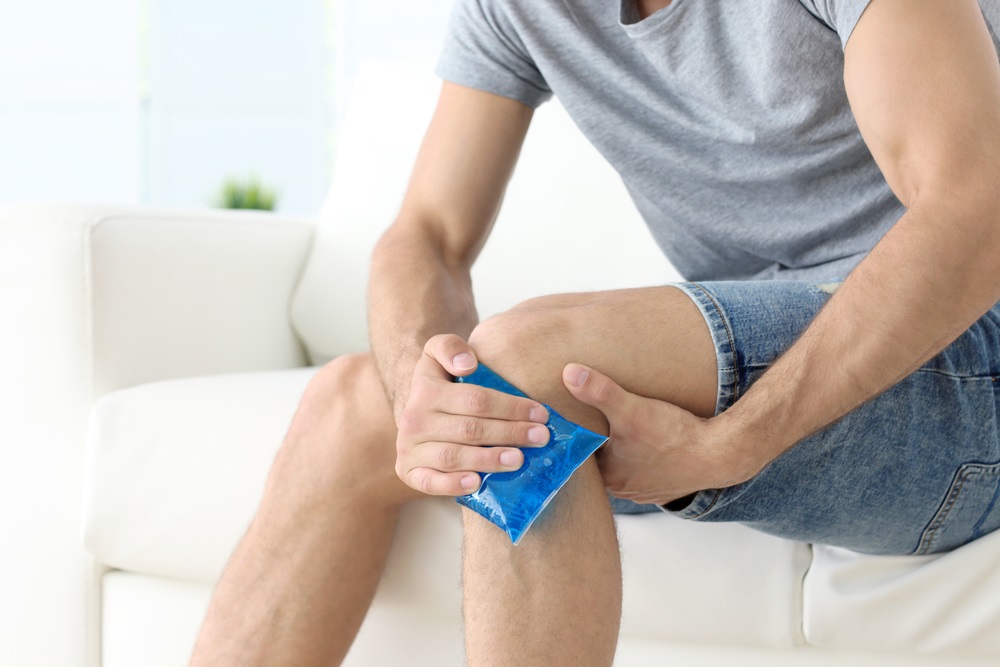The 6 Stages of Healing: A Physiotherapist’s Guide to Recovery and Resilience
-Stuti Punshi

Healing is rarely a straight line — and anyone who has gone through a physical injury knows that recovery often comes with good days, setbacks, and moments of uncertainty. Whether you’ve recently experienced a strain, sprain, or post-surgical recovery, understanding the stages your body naturally goes through can help reduce anxiety and give you a clear framework to track your progress.
As physiotherapists, we often remind our patients that healing is not something we force — it’s something we support, guide, and optimize. Every injury is unique, but the biological process of tissue repair follows a relatively predictable pattern. Let’s explore the six stages of healing and how physiotherapy can play a critical role in each one.
Stage 1: Injury & Inflammation

Your body’s alarm system is activated.
The first stage of healing begins the moment an injury occurs. Whether it’s a muscle tear, ligament strain, or joint trauma, your body immediately responds by activating an inflammatory process. This is not only normal — it’s necessary. Inflammation is your body’s natural way of cleaning out damaged cells and beginning the repair process.
You may notice swelling, warmth, redness, or pain in the affected area. These signs, while uncomfortable, are signals that your immune system is actively working.
At this stage, physiotherapy focuses on managing pain, reducing swelling, and preventing stiffness. Treatments might include gentle movement, cold therapy, education on activity modification, and supportive taping or bracing if needed.
Stage 2: Early Repair (Proliferation Phase)

The rebuilding begins — slowly but surely.
Once the initial inflammation begins to settle, your body enters a stage where new tissue is laid down to replace what was damaged. This phase is called the proliferation phase, where fibroblasts (specialized cells) begin producing collagen and other materials to form new connective tissue.
Although healing is underway, this new tissue is still fragile and disorganized. This is where physiotherapy plays a key role in safely reintroducing movement to prevent stiffness and encourage proper alignment of new fibers.
Therapists may introduce gentle mobility exercises, range-of-motion routines, and targeted stretches. The goal is not to push through pain but to support healing while preventing complications like joint restriction or compensatory movement patterns.
Stage 3: Remodelling & Strengthening
The foundation is built — now it needs structure and strength.
During the remodeling phase, the newly formed tissue begins to mature and reorganize into a more structured, resilient form. This stage can last weeks or even months depending on the type and severity of the injury.
The collagen fibers begin to align in the direction of stress and load, which is why progressive, guided movement is so important here. If left completely inactive, the tissue may remain weak or improperly aligned, increasing the risk of reinjury.
Physiotherapists will guide you through controlled strengthening exercises, focusing on muscle balance, joint stability, and safe loading. Techniques such as resistance training, balance work, and functional movement retraining are introduced gradually to build strength without compromising healing.
Stage 4: Functional Restoration

Rebuilding confidence in your body’s movement.
Once the tissue has matured, the focus shifts from healing the injury to restoring full function in your everyday life. This stage is about more than range of motion or strength — it’s about retraining your body to move efficiently, confidently, and without hesitation.
This is when you and your physiotherapist start working toward specific movement goals: whether it’s climbing stairs without pain, returning to the gym, playing a sport, or simply being able to lift your kids or groceries with ease.
Therapy during this stage may involve dynamic balance drills, advanced core control, plyometric exercises, and movement pattern correction to prevent future injuries.
Stage 5: Return to Activity & Injury Prevention

From recovery to resilience.
Once your body can move well and tolerate load, the next natural step is a gradual return to your full routine — whether that’s work, sports, fitness, or daily tasks. But this phase isn’t just about going back to what you were doing before — it’s about doing it better, safer, and smarter.
Your physiotherapist will assess your readiness to return to higher-level activities and offer strategies to prevent re-injury. This might include ergonomic guidance, sport-specific drills, movement retraining, and strengthening any lingering weak areas.
In many ways, this stage is where recovery becomes prevention. By building awareness, strength, and smarter movement habits, you reduce your chances of setbacks and improve overall performance.
Stage 6: Maintenance & Long-Term Wellness

Because your body deserves consistent care — not just crisis care.
The final stage of healing isn’t about an injury at all — it’s about staying well. Maintenance and wellness physiotherapy ensures you continue to move well, feel strong, and live without the fear of reinjury.
This might involve a home exercise program, occasional physiotherapy check-ins, postural training, stress reduction techniques, or lifestyle adjustments to support your overall health. Just like dental hygiene or mental wellness, physical wellness is ongoing — and your body will thank you for it.
Why Seeing the Healing Process Through Matters

While it may be tempting to stop treatment once the pain reduces or daily activities become easier, it’s important to understand that true healing involves more than pain relief. Pain often subsides long before the tissue has fully recovered, and returning to your usual routine too soon — without proper strengthening or retraining — can leave you vulnerable to reinjury.
As physiotherapists, we see this pattern often: patients begin to feel better during the early stages and assume they’re “healed” — only to find themselves dealing with the same injury weeks or months later. That’s why we always stress the importance of completing the full rehabilitation journey. Each phase of healing builds on the one before it, and skipping ahead too quickly can compromise long-term recovery.
At Complete Care Physiotherapy Centre, we tailor each session to your current stage of healing. Whether you’re just beginning to reduce inflammation, or you’re working on restoring high-level function, your treatment plan will evolve with you. We assess not only your symptoms but also your movement patterns, strength, and function to ensure your care is aligned with where your body truly is — not just how it feels.
Healing isn’t a one-size-fits-all process. By moving through each stage with professional guidance, you not only heal — you build resilience, confidence, and control over your movement again.
Final Thoughts
Healing is both a science and a journey. While the process may not always be linear, understanding these six stages can offer clarity, motivation, and reassurance along the way. Whether you’re early in recovery or looking to return to your best self, know that physiotherapy is here to support you at every step.
At Complete Care Physiotherapy Centre, we work closely with you to not only treat your injury but to empower you with the tools and knowledge you need for lasting recovery. If you’re ready to take the next step in your healing journey, we’re here to help.
📍 Complete Care Physiotherapy Centre
📞 Call: 647-496-7065
📧 Email: completecarels@gmail.com
🌐 Visit: www.completeccare.ca




